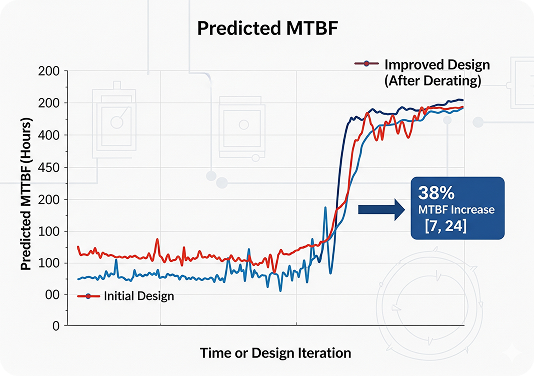An aerospace electronics supplier needed to confirm that its new avionics module could perform reliably in extreme flight conditions. The system had to survive heat, vibration, and long hours of continuous operation. To meet these demands, Relteck ran a full MIL-HDBK-217–based MTBF analysis and applied component derating across critical circuits.
The result was a 38% improvement in predicted MTBF analysis. A 24% drop in component stress, and a more stable mission reliability profile for the client’s next-gen aircraft systems. Similar optimization approaches were also applied in our MTBF prediction for automotive systems case study. Showcasing consistent reliability gains across industries.


